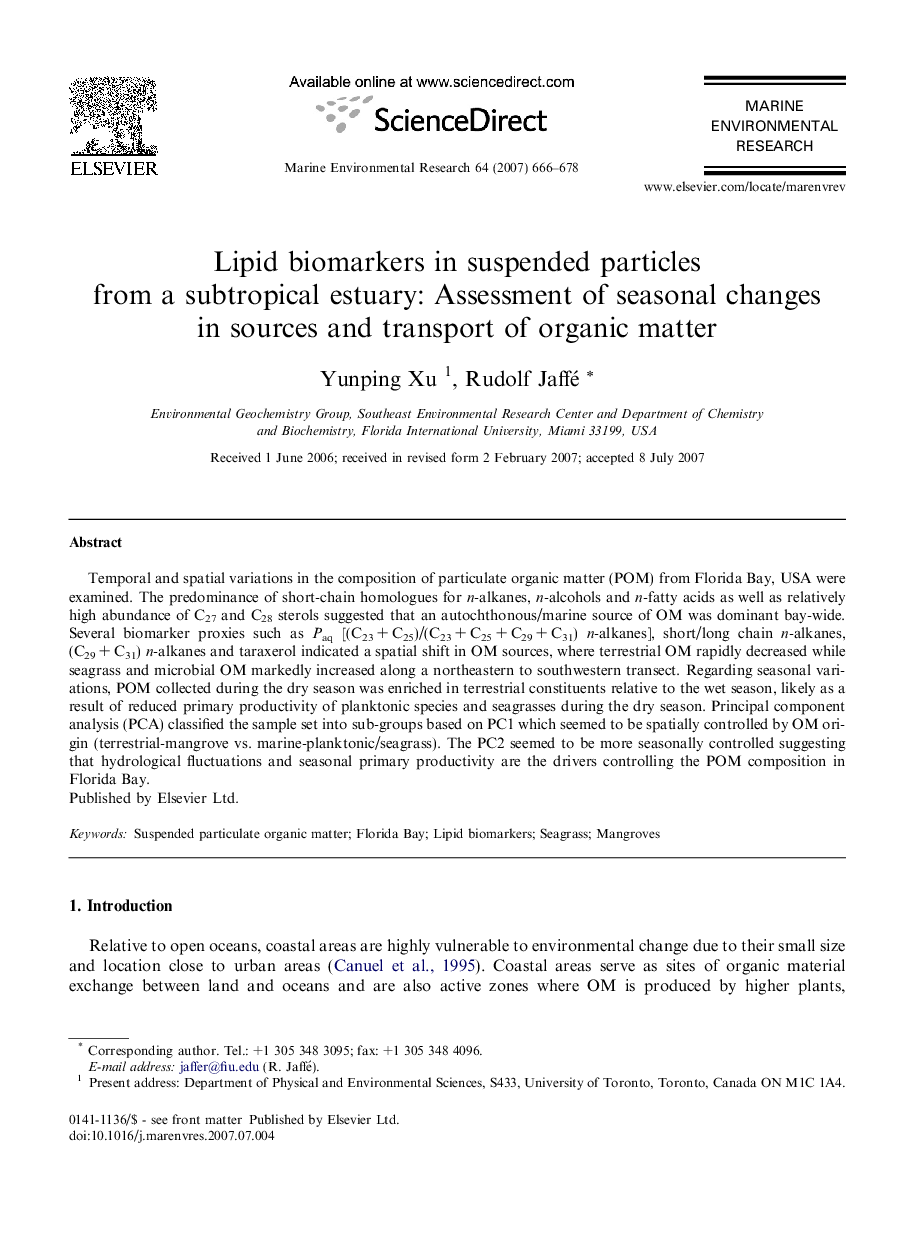| Article ID | Journal | Published Year | Pages | File Type |
|---|---|---|---|---|
| 4551796 | Marine Environmental Research | 2007 | 13 Pages |
Temporal and spatial variations in the composition of particulate organic matter (POM) from Florida Bay, USA were examined. The predominance of short-chain homologues for n-alkanes, n-alcohols and n-fatty acids as well as relatively high abundance of C27 and C28 sterols suggested that an autochthonous/marine source of OM was dominant bay-wide. Several biomarker proxies such as Paq [(C23 + C25)/(C23 + C25 + C29 + C31) n-alkanes], short/long chain n-alkanes, (C29 + C31) n-alkanes and taraxerol indicated a spatial shift in OM sources, where terrestrial OM rapidly decreased while seagrass and microbial OM markedly increased along a northeastern to southwestern transect. Regarding seasonal variations, POM collected during the dry season was enriched in terrestrial constituents relative to the wet season, likely as a result of reduced primary productivity of planktonic species and seagrasses during the dry season. Principal component analysis (PCA) classified the sample set into sub-groups based on PC1 which seemed to be spatially controlled by OM origin (terrestrial-mangrove vs. marine-planktonic/seagrass). The PC2 seemed to be more seasonally controlled suggesting that hydrological fluctuations and seasonal primary productivity are the drivers controlling the POM composition in Florida Bay.
